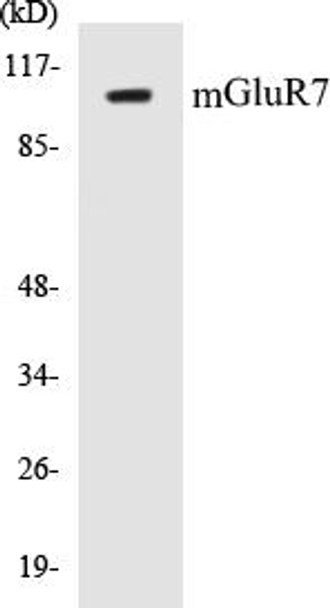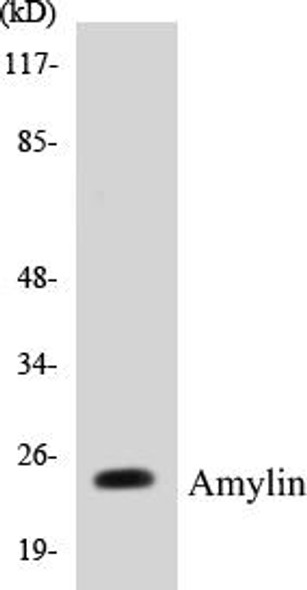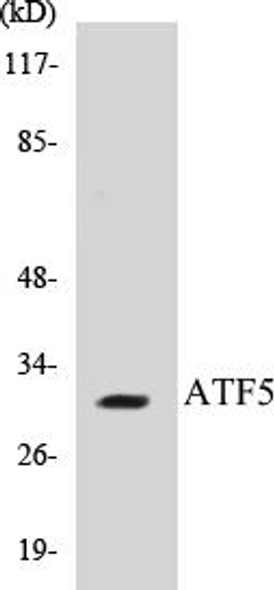Description
mGluR7 Colorimetric Cell-Based ELISA Kit
The mGluR7 Colorimetric Cell-Based ELISA Kit from Assay Genie is a powerful tool for studying the metabotropic glutamate receptor 7 (mGluR7) in cell models. This kit provides a simple and reliable method for measuring mGluR7 levels in cultured cells, allowing researchers to accurately assess receptor activity and screen potential drug candidates.mGluR7 is a key player in regulating neurotransmission and synaptic plasticity in the central nervous system, making it a valuable target for drug discovery and understanding neurological disorders.
This ELISA kit offers high sensitivity and specificity, ensuring precise measurements of mGluR7 expression and function.With its easy-to-use protocol and robust performance, the mGluR7 Colorimetric Cell-Based ELISA Kit is an essential tool for researchers studying mGluR7 signaling pathways and developing novel therapies for neurological conditions. Trust Assay Genie for accurate and reliable results in your mGluR7 research.
| Product Name: | mGluR7 Colorimetric Cell-Based ELISA |
| Product Code: | CBCAB00756 |
| ELISA Type: | Cell-Based |
| Target: | mGluR7 |
| Reactivity: | Human, Mouse, Rat |
| Dynamic Range: | > 5000 Cells |
| Detection Method: | Colorimetric 450 nmStorage/Stability:4°C/6 Months |
| Format: | 96-Well Microplate |
The mGluR7 Colorimetric Cell-Based ELISA Kit is a convenient, lysate-free, high throughput and sensitive assay kit that can detect mGluR7 protein expression profile in cells. The kit can be used for measuring the relative amounts of mGluR7 in cultured cells as well as screening for the effects that various treatments, inhibitors (ie siRNA or chemicals), or activators have on mGluR7.
Qualitative determination of mGluR7 concentration is achieved by an indirect ELISA format. In essence, mGluR7 is captured by mGluR7-specific primary antibodies while the HRP-conjugated secondary antibodies bind the Fc region of the primary antibody. Through this binding, the HRP enzyme conjugated to the secondary antibody can catalyze a colorimetric reaction upon substrate addition. Due to the qualitative nature of the Cell-Based ELISA, multiple normalization methods are needed:
| 1. | A monoclonal antibody specific for human GAPDH is included to serve as an internal positive control in normalizing the target absorbance values. |
| 2. | Following the colorimetric measurement of HRP activity via substrate addition, the Crystal Violet whole-cell staining method may be used to determine cell density. After staining, the results can be analysed by normalizing the absorbance values to cell amounts, by which the plating difference can be adjusted. |
| Database Information: | Gene ID: 2917, UniProt ID: Q14831, OMIM: 604101, Unigene: Hs.606393/Hs.660131 |
| Gene Symbol: | GRM7 |
| Sub Type: | None |
| UniProt Protein Function: | mGluR7: Receptor for glutamate. The activity of this receptor is mediated by a G-protein that inhibits adenylate cyclase activity. Belongs to the G-protein coupled receptor 3 family. 5 isoforms of the human protein are produced by alternative splicing. |
| UniProt Protein Details: | Protein type:Membrane protein, multi-pass; GPCR, family 3; Receptor, GPCR; Membrane protein, integral Chromosomal Location of Human Ortholog: 3p26.1-p25.1 Cellular Component: asymmetric synapse; axon; cell cortex; dendrite; dendritic shaft; integral to membrane; integral to plasma membrane; plasma membrane; postsynaptic membrane; presynaptic active zone; presynaptic membrane; receptor complex Molecular Function:calcium channel regulator activity; glutamate receptor activity; group III metabotropic glutamate receptor activity Biological Process: behavioral fear response; metabotropic glutamate receptor, adenylate cyclase inhibiting pathway; negative regulation of cAMP biosynthetic process; negative regulation of glutamate secretion; regulation of synaptic transmission, glutamatergic; sensory perception of sound; synaptic transmission |
| NCBI Summary: | L-glutamate is the major excitatory neurotransmitter in the central nervous system, and it activates both ionotropic and metabotropic glutamate receptors. Glutamatergic neurotransmission is involved in most aspects of normal brain function and can be perturbed in many neuropathologic conditions. The metabotropic glutamate receptors are a family of G protein-coupled receptors that have been divided into three groups on the basis of sequence homology, putative signal transduction mechanisms, and pharmacologic properties. Group I includes GRM1 and GRM5, and these receptors have been shown to activate phospholipase C. Group II includes GRM2 and GRM3, while Group III includes GRM4, GRM6, GRM7 and GRM8. Group II and III receptors are linked to the inhibition of the cyclic AMP cascade but differ in their agonist selectivities. Multiple transcript variants encoding different isoforms have been found for this gene. [provided by RefSeq, Jun 2009] |
| UniProt Code: | Q14831 |
| NCBI GenInfo Identifier: | 2495078 |
| NCBI Gene ID: | 2917 |
| NCBI Accession: | Q14831.1 |
| UniProt Secondary Accession: | Q14831,Q8NFS2, Q8NFS3, Q8NFS4, |
| UniProt Related Accession: | Q14831 |
| Molecular Weight: | 101,302 Da |
| NCBI Full Name: | Metabotropic glutamate receptor 7 |
| NCBI Synonym Full Names: | glutamate metabotropic receptor 7 |
| NCBI Official Symbol: | GRM7 |
| NCBI Official Synonym Symbols: | GLUR7; MGLU7; GPRC1G; MGLUR7; PPP1R87 |
| NCBI Protein Information: | metabotropic glutamate receptor 7 |
| UniProt Protein Name: | Metabotropic glutamate receptor 7 |
| Protein Family: | Metabotropic glutamate receptor |
| UniProt Gene Name: | GRM7 |
| UniProt Entry Name: | GRM7_HUMAN |
| Component | Quantity |
| 96-Well Cell Culture Clear-Bottom Microplate | 2 plates |
| 10X TBS | 24 mL |
| Quenching Buffer | 24 mL |
| Blocking Buffer | 50 mL |
| 15X Wash Buffer | 50 mL |
| Primary Antibody Diluent | 12 mL |
| 100x Anti-Phospho Target Antibody | 60 µL |
| 100x Anti-Target Antibody | 60 µL |
| Anti-GAPDH Antibody | 60 µL |
| HRP-Conjugated Anti-Rabbit IgG Antibody | 12 mL |
| HRP-Conjugated Anti-Mouse IgG Antibody | 12 mL |
| SDS Solution | 12 mL |
| Stop Solution | 24 mL |
| Ready-to-Use Substrate | 12 mL |
| Crystal Violet Solution | 12 mL |
| Adhesive Plate Seals | 2 seals |
The following materials and/or equipment are NOT provided in this kit but are necessary to successfully conduct the experiment:
- Microplate reader able to measure absorbance at 450 nm and/or 595 nm for Crystal Violet Cell Staining (Optional)
- Micropipettes with capability of measuring volumes ranging from 1 µL to 1 ml
- 37% formaldehyde (Sigma Cat# F-8775) or formaldehyde from other sources
- Squirt bottle, manifold dispenser, multichannel pipette reservoir or automated microplate washer
- Graph paper or computer software capable of generating or displaying logarithmic functions
- Absorbent papers or vacuum aspirator
- Test tubes or microfuge tubes capable of storing ≥1 ml
- Poly-L-Lysine (Sigma Cat# P4832 for suspension cells)
- Orbital shaker (optional)
- Deionized or sterile water
*Note: Protocols are specific to each batch/lot. For the correct instructions please follow the protocol included in your kit.
| Step | Procedure |
| 1. | Seed 200 µL of 20,000 adherent cells in culture medium in each well of a 96-well plate. The plates included in the kit are sterile and treated for cell culture. For suspension cells and loosely attached cells, coat the plates with 100 µL of 10 µg/ml Poly-L-Lysine (not included) to each well of a 96-well plate for 30 minutes at 37°C prior to adding cells. |
| 2. | Incubate the cells for overnight at 37°C, 5% CO2. |
| 3. | Treat the cells as desired. |
| 4. | Remove the cell culture medium and rinse with 200 µL of 1x TBS, twice. |
| 5. | Fix the cells by incubating with 100 µL of Fixing Solution for 20 minutes at room temperature. The 4% formaldehyde is used for adherent cells and 8% formaldehyde is used for suspension cells and loosely attached cells. |
| 6. | Remove the Fixing Solution and wash the plate 3 times with 200 µL 1x Wash Buffer for five minutes each time with gentle shaking on the orbital shaker. The plate can be stored at 4°C for a week. |
| 7. | Add 100 µL of Quenching Buffer and incubate for 20 minutes at room temperature. |
| 8. | Wash the plate 3 times with 1x Wash Buffer for 5 minutes each time. |
| 9. | Add 200 µL of Blocking Buffer and incubate for 1 hour at room temperature. |
| 10. | Wash 3 times with 200 µL of 1x Wash Buffer for 5 minutes each time. |
| 11. | Add 50 µL of 1x primary antibodies (Anti-mGluR7 Antibody and/or Anti-GAPDH Antibody) to the corresponding wells, cover with Parafilm and incubate for 16 hours (overnight) at 4°C. If the target expression is known to be high, incubate for 2 hours at room temperature. |
| 12. | Wash 3 times with 200 µL of 1x Wash Buffer for 5 minutes each time. |
| 13. | Add 50 µL of 1x secondary antibodies (HRP-Conjugated AntiRabbit IgG Antibody or HRP-Conjugated Anti-Mouse IgG Antibody) to corresponding wells and incubate for 1.5 hours at room temperature. |
| 14. | Wash 3 times with 200 µL of 1x Wash Buffer for 5 minutes each time. |
| 15. | Add 50 µL of Ready-to-Use Substrate to each well and incubate for 30 minutes at room temperature in the dark. |
| 16. | Add 50 µL of Stop Solution to each well and read OD at 450 nm immediately using the microplate reader. |
(Additional Crystal Violet staining may be performed if desired – details of this may be found in the kit technical manual.)






